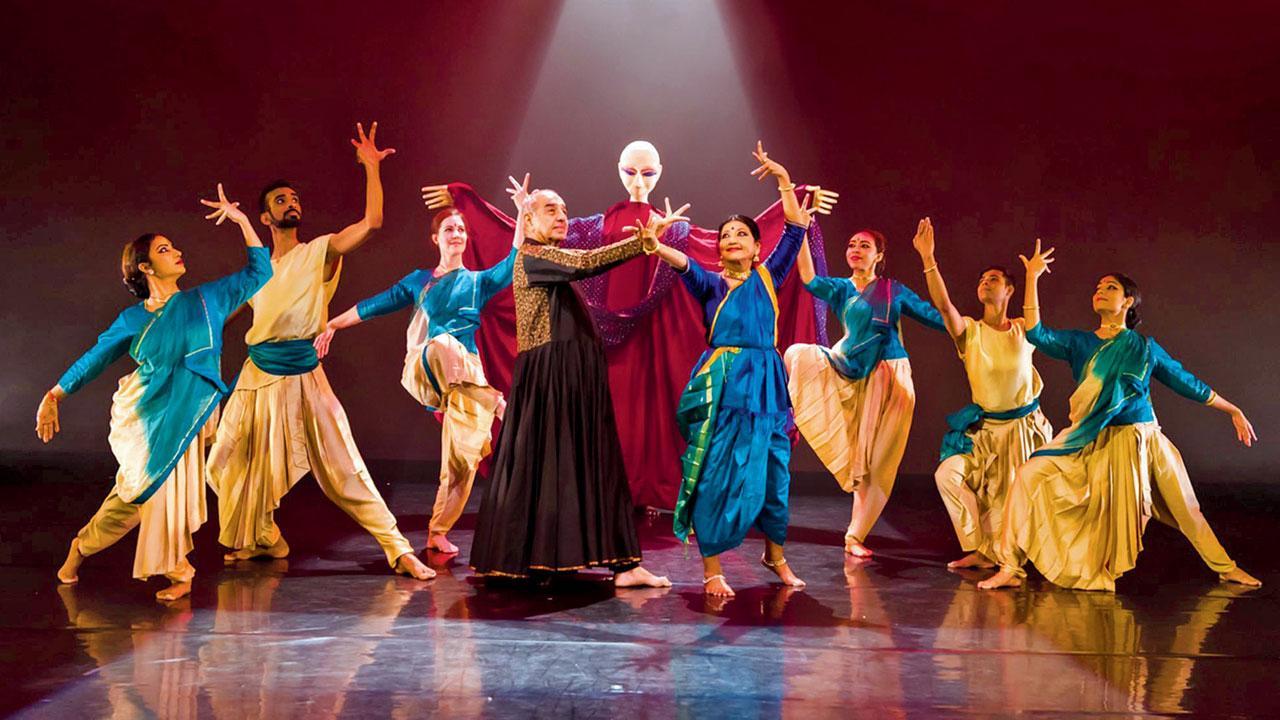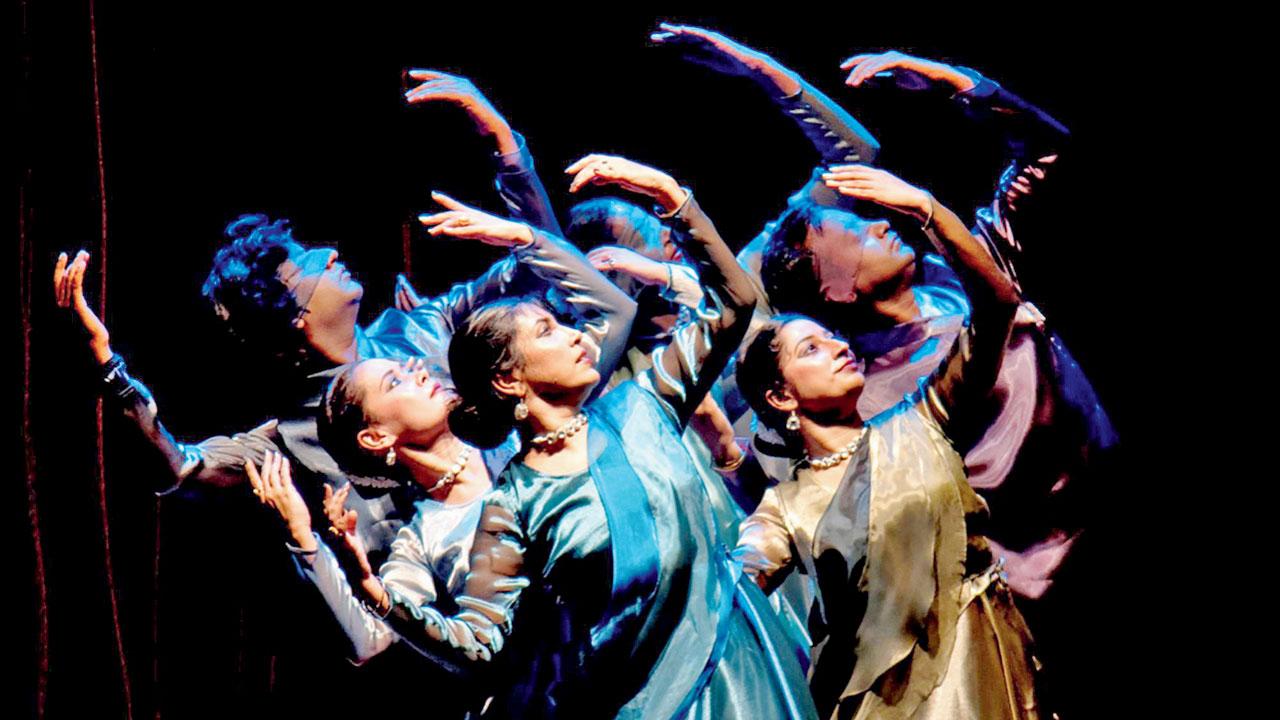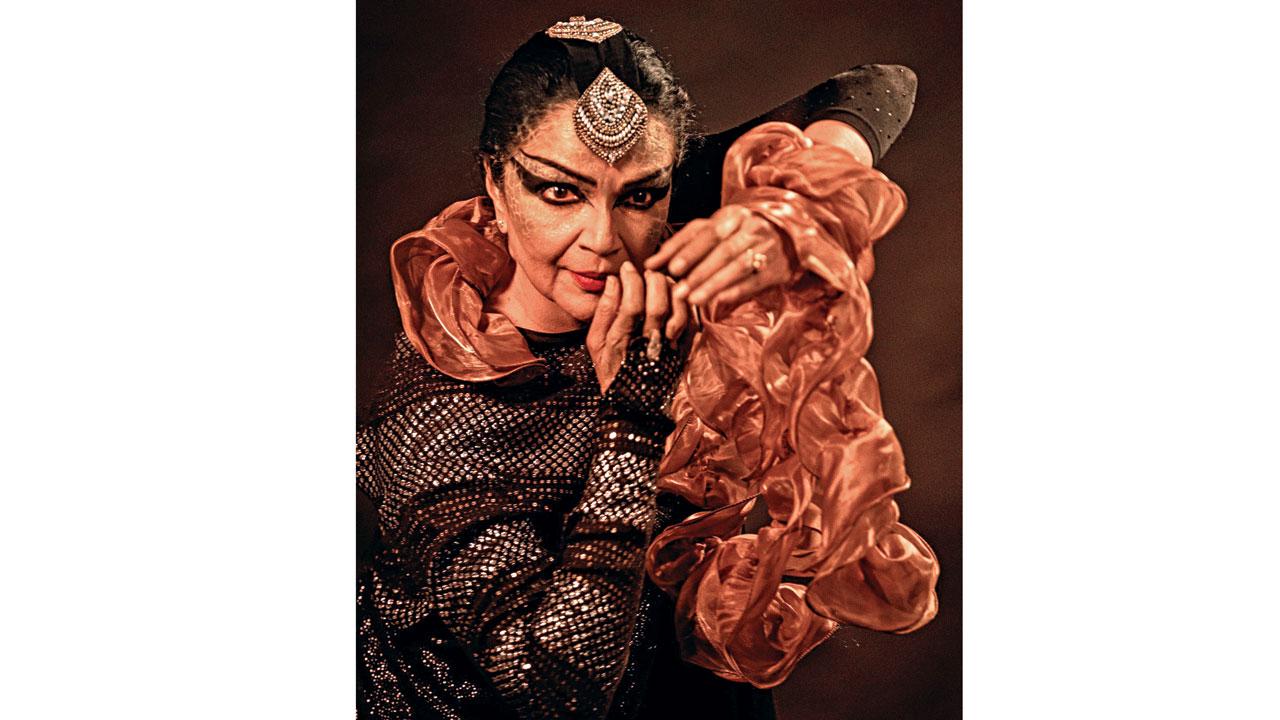In To Stitch or Knot, celebrated designer Sandhya Raman explores how dance costumes create a visual vocabulary for audiences

After her first interaction with costume design, Raman has dressed stalwarts like Aditi Mangaldas, Geeta Chandran, Malavika Sarukkai, Anita Ratnam, and the late Astad Deboo. PIC COURTESY/SANDHYA RAMAN
What makes for a spectacle? When the curtains fall and the music fades away, what leaves the audience in a trance? When they leave the room, is it only the mudra that they remember? Is it only the movement and the rhythm that bring a performance to life? Sandhya Raman, an award-winning costume designer, curator, and textile activist, is of the belief that it is costumes that immortalise a show.
ADVERTISEMENT
In 1990, Raman, then a design student and performing arts enthusiast, met American choreographer Jonathan Hollander at NID. The next year, she’d be working on “Moonbeam,” an Indo-American collaboration, where she dressed distinguished Indian classical dancer Mallika Sarabhai in a white Bengal cotton robe to make for a truly alluring sight. She reminisces about the sheer, textured fabric while speaking to mid-day about her costume showcase, To Stitch or Knot, at the Dilip Piramal Art Gallery, NCPA, as a part of their Mudra Dance Festival.

Mirage by Sangita Chatterjee (2013). The concept is as the word goes, the aim is to create an illusion and reflection, for which Raman recreated hues and shades of glistening water using some sparkle fabric satin organza, most of them were man-made fibres.
The exhibition, open until April 29, is a celebration of a prolific career lasting for about three decades. An ode to the diverse art forms that have shaped her body of work in dance costuming, the retrospective will house 10 to 12 stunning costumes from Raman’s repertory, along with around 50 photographs and 4 to 5 installations. She said, “By invoking the five elements and senses and their relationship with costume, I hope to highlight that a costume is more than just a piece of fabric.”
The Stree Shakti Puraskar awardee gives the utmost importance to ergonomics; through her fine detailing, she creates textiles that comprise neither the movement nor the visual narrative. Costuming is a delicate, meaningful, and intricate art that is often neglected and undervalued. “The aim,” Raman elaborates, “is to create something powerful. If you want to depict Ravana, you don’t necessarily have to use the ten heads. You need something that is bold and captures the intensity of the character.”

As someone who focuses on ‘socially responsible design’, Raman is particular about the fabric she sources, ensuring to trace the lineage of the art form, alongside creating a relationship with local craftsmen. Previously, she has worked on projects for children on the autism spectrum
The exhibit, no doubt, reflects her ethos as a designer. From understanding the theme, genre, and heritage of the dance form to sitting down with the performers to incorporate their needs into the cuts and the fabric she’d choose, Raman prioritises aesthetics, form, and functionality in her process. Her approach resonates with what her frequent collaborator and Kathak stalwart, Aditi Mangaldas, has said about the practice: imagination is a crucial aspect of any artistic endeavour, and it is aharya, or the art of expression, that ignites that imagination.
Raman seeks to ignite the terpsichorean imagination further with the workshop she will conduct alongside the exhibit on April 28. She hopes to transport the attendees into a world of textiles. “Fabrics have a mind of their own, and each fabric has its mode. I want them to know what works, and I want them to know how to appreciate it.”

Dr. Anita Ratnam portraying the character of KAA from The Jungle Book revisited by Vinita Belani. Raman brought out the shimmer and the slither of the snake, the mystery exoticness, using crinkled bandhej, some textured sequened cotton knits, crepe, and some organza
Raman feels that most students tend to pursue fashion design due to its inherent glamour. As the visitors navigate the relationship between textiles and the performing arts, she attempts to imbibe the idea of dance costuming as a consequential métier.
 Subscribe today by clicking the link and stay updated with the latest news!" Click here!
Subscribe today by clicking the link and stay updated with the latest news!" Click here!












